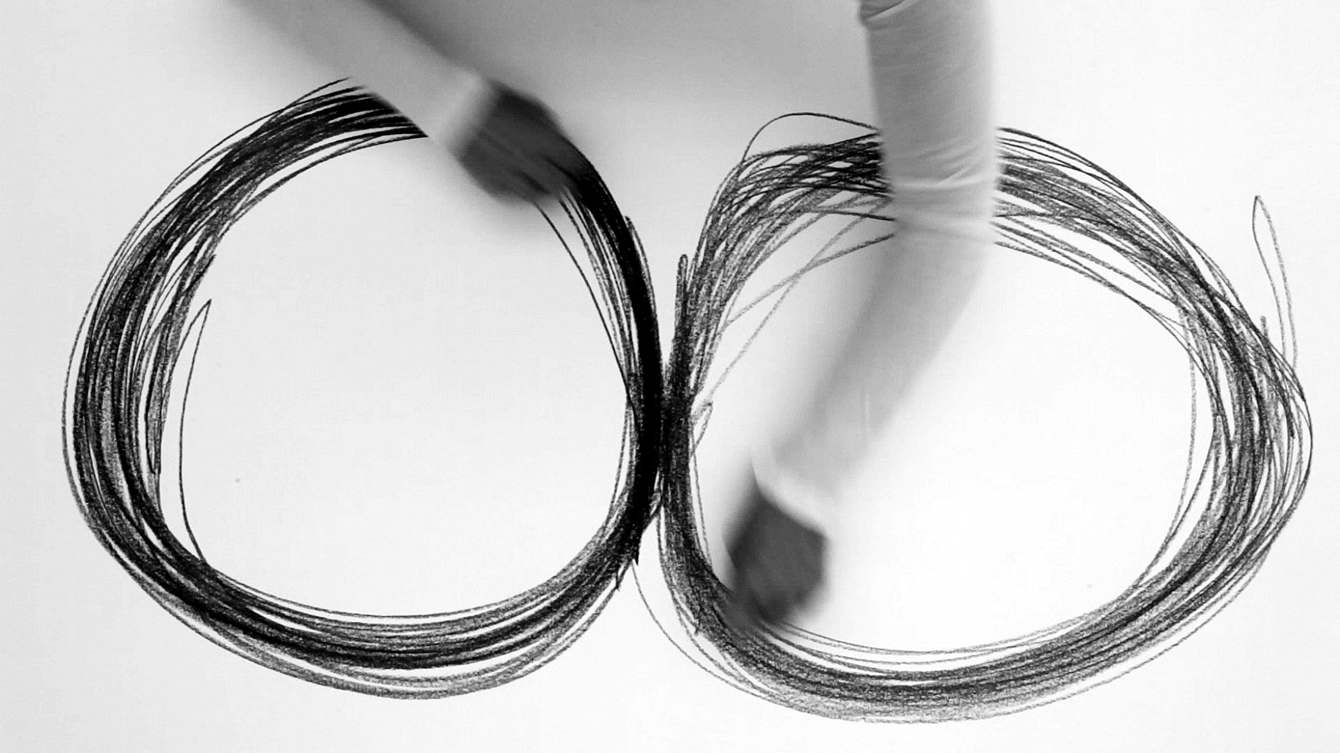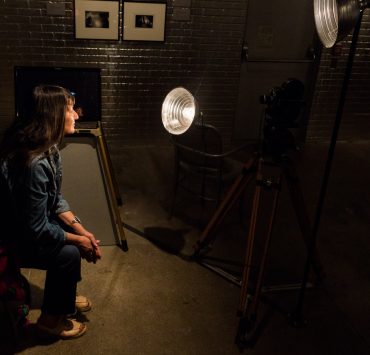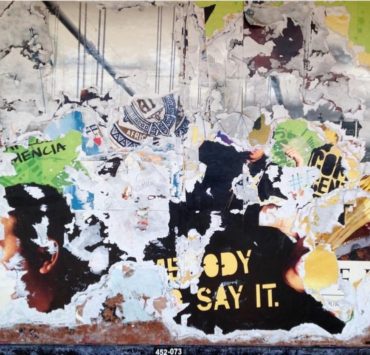
Malvina Sammarone uses both of her hands in her drawings, creating a reversed mirrored image. The action itself can be perceived as an extreme act, exhausting the mental and physical. While looking at her drawings we lose the focal point and start to perceive what stays in the periphery, on the edges. This is one of the many reasons we are featuring her work in this issue. As a visual artist she transits through drawing, photography, video, and installations, where time, duration, unpredictability, chance, repetition, and process permeate all her works. She’s based in São Paulo, Brazil.
Aster(ix): In your work, drawing seems to be the core of your activity and the source of your creativity. We want to ask you what distinguishes drawing for you from other disciplines such as painting, etc. Why do you choose drawing as your main tool of expression?
Malvina Sammarone: I think in part this happens because I’ve always identified myself with the line, traces, sketches as a tool of expression and another because of architecture, which I also studied. Aster(ix): When did you start making art?
MS: I started very young taking classes of drawing and watercolor. Later when I went to the University (Industrial Design and then, Architecture) I would attend drawing and painting classes in artists’ studios. After my BA, I worked with a landscape architect for a while. But I was always producing art. In the beginning of the 90s I decided to work just as a visual artist.
Aster(ix): In this issue, we are thinking about edges. Aesthetic edges, political, emotional, etc. In what ways are you interested in your process to push against edges, if at all?
MS: I’ve been thinking a lot about how I could approach certain political issues, For example, violence against children and young people in my country. Domestic violence against women, children and the elderly. Differences in identity… maybe in my photography and video work, however I do not usually exhibit those because unfortunately there are not enough opportunities in São Paulo. But in my work I do touch on issues of edges, memory and loss.
Aster(ix): Your drawings have a strong performative connotation, can you tell us what is the role of time and duration in your work? When do you know a drawing is finished?
MS: Time and duration are very present in my work, as well as the notion of possibility and unpredictability, error and exhaustion. These are incorporated in my artistic process by using the possibilities and limitations of the body. And this, the body, as a measurement tool to register geometries, figures, numbers, through the movement, will be executed for as long as consciousness flows in a continuous and indefinite period. The longer the action lasts, the more changes physically and psychologically, perception and reality become different. If a transformation happens, one can decide to change the action or complete it.
Aster(ix): In your process it seems like you use rules, physical constrictions and repetitions in order to perform your drawing. Why do you use this strategy and in which way does this modality affect your work? How does your process work?



MS: Yes, I give myself ‘instructions’. Sometimes I exploit repetitive movements, with mental statements. For example: How will lines occupy paper space? Occasionally, I apply a rule, as orders of reverse movements, stipulated as a priori. The drawings are configured as traces left by the graphite deposit on the surface of paper, a record/trait of mental versus physical activity. Also I will use rubber bands on my arms to constrict my movements. I have another series of works called Numbers, where the materials I use varied papers and permanent pen. It is a numerical sequence that is being done exhaustively, without ending. The work is bound to the limits of the body and time.
Aster(ix): What and who are your influences?
MS: I have many. For example the minimal/post-minimal/conceptual artist Sol LeWitt. He is an artist who is interested in ideas, elementary forms, modularity, grids, repetition, serialism, systems and instructions. The fact that collaborations were part of his creative process. I also use Eva Hesse as a reference, for her search for the authentic, the appropriation of unexpected materials, and the appropriation of serial and modular forms in the production of variable and disturbing works. Other artists such as Hanne Darboven, Bruce Nauman, Vito Acconci Tacita Dean, Susan Hiller, Francis Alys, Richard Long, Trisha Brown, Lygia Clark, Helio Oiticica, Nelson Felix are great influences. I also look to literature. Samuel Beckett interests me because of his circular form of reasoning, extracting something from nothing, and communicating the incommunicable. Julio Cortazars work provokes me as a reader, because of its attempt to put a man within his limits, and at the same time, a playful exercise. Other writers include, Jorge Luis Borges, Italo Calvino, Clarice Lispector, Georges Didi-Huberman, Giles Deleuze.
And then there is music. For me John Cage is one of the most innovative experimenters in the field of music and art. Brian Eno: The work of the “non-musician”, as Eno describes himself, interests me since the 80’s, when I became in contact with his experimental and ambient electronic music and his collaborations with so many other artists. And there is always Classical Music.








